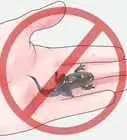This article was co-authored by wikiHow Staff. Our trained team of editors and researchers validate articles for accuracy and comprehensiveness. wikiHow's Content Management Team carefully monitors the work from our editorial staff to ensure that each article is backed by trusted research and meets our high quality standards.
wikiHow marks an article as reader-approved once it receives enough positive feedback. In this case, 96% of readers who voted found the article helpful, earning it our reader-approved status.
This article has been viewed 38,030 times.
Learn more...
Wild southern toads are interesting and exciting creatures to keep as house pets. Not only do they require little day-to-day maintenance, but they can also be fun to sit and watch when they’re active. If you’re interested in taking care of a southern toad, you first have to prepare a habitat fit for a toad, then go out and catch one, or purchase one from a store. Once you’ve brought your new pet home, just feed it, help it stay healthy, and have fun with your new friend!
Steps
Creating a Habitat
-
1Use a 10 US gal (38 L) tank to house a single toad. If you intend to keep more than 1 toad in the same tank, add 5 gallons (19 L) to the volume of the tank per extra toad. An adequately sized tank will probably be about 20 inches (51 cm) long, 10 inches (25 cm) wide, and 12 inches (30 cm) tall.
- For example, if you plan to keep 3 southern toads together in the same tank, the tank should be at least 20 gallons (76 L) in volume.
- The tank can be any ordinary aquarium or terrarium made of glass or molded plastic.
- Note that male toads tend to not get along very well, so you shouldn’t keep multiple males in the same habitat.
-
2Place substrate your toad can dig in on the bottom of the tank. For best results, use either coconut husk fiber, unfertilized peat moss, leaf litter, Cyprus mulch, or potting soil. Place 2 to 3 inches (5.1 to 7.6 cm) of substrate on the bottom of the tank to give your toad enough soil to dig into.[1]
- You can buy these types of substrate at any pet store that sells supplies for amphibians.
- Avoid using sand, gravel, or small bark shavings as substrate, as your toad might accidentally swallow these and develop gastrointestinal problems as a result.
Advertisement -
3Add natural decor to the tank that the toad can hide in. This should include natural objects that the toad can burrow and hide under, such as small logs and driftwood pieces, as well as tilted bark for sleeping. Place at least 3-4 pieces of decor in the terrarium for your toad to hide under and enjoy hopping on.
- You can buy these pieces of decor at most pet shops. Wash them with dish soap and hot water before placing them in the terrarium.
- If you choose to use natural objects from outdoors, just be sure to wash them before placing them in the tank.
- Your toad may also appreciate having a fake hollowed out log it can hide inside.
-
4Put a shallow bowl of de-chlorinated water in the tank. The water in the bowl should be about 1 inch (2.5 cm) deep and should never be deeper than your toad’s nose. This bowl will be used by the toad for soaking and going to the bathroom.
- If the water in the bowl is too deep, your toad may actually drown, so it’s important that the water never go above the height of your toad’s nose.
-
5Spray the substrate daily to maintain adequate humidity levels. The humidity in your toad’s terrarium doesn’t need to be any greater than the humidity in your house, but you need to prevent the substrate itself from drying out. Use a spray bottle to spray the surface of the substrate every morning.[2]
- Be sure that you only use de-chlorinated water to spray the substrate, since toads are very susceptible to environmental toxins.
-
6Keep the temperature in the tank between 65 and 82 °F (18 and 28 °C). Place the tank in an area of your house where this temperature will be maintained and put a heating pad under 1 end of the tank. This will give your toad the option of being on the heated side or the cooler side of the tank. Use a terrarium thermometer to monitor the internal temperature of the tank.[3]
- You can buy reptile heating pads and terrarium thermometers at any pet store that sells reptile supplies.
- Don’t place your toad’s habitat near an open window or air vent, as it may be more difficult to control the temperature in these areas of your house.
Catching a Wild Southern Toad
-
1Look for wild toads near ponds and in marshes at night. Southern toads are nocturnal and are thus most active at night, so you’re more likely to catch a wild one after about 8:00 P.M. This type of toad typically lives in sandy areas, marshes, and mixed hardwood swamps, although you may also spot them around ponds and the edges of forests.[4]
- Southern toads are found in every southeastern state in the United States except Tennessee.
- Note that in the northern part of their range, southern toads are inactive in the fall and winter. They are active year-round in most of Florida.
-
2Check for highly pronounced crests on the back of the toad’s head. While southern toads look very similar to American toads, the highly pronounced knobs and crests behind their eyes are their most identifying features. Southern toads are also likely to have smaller bumps (also called warts) surrounding the rest of their skin.[5]
- You don’t have to worry about these so-called “warts.” While some people think handling a toad will give you warts, this is not actually true.
- Southern toads vary in coloring, from brown, to black, to red. Unlike some other species of toad, they have no dark spots on their skin.
- Southern toads are typically 1.5 to 3 inches (3.8 to 7.6 cm) long.
-
3Cup a wild toad very gently and slowly with your hands to catch it. Southern toads, especially young ones, can be very small, so you might injure them if you handle them too aggressively. They are also very quick and can jump very high, so avoid scaring them when trying to catch them.[6]
- If you’re using your hands to capture your toad, note that it may urinate on you as a defense mechanism. If this happens, carry the toad to a safe area and then wash your hands with soap and water.
- You can also use a frog net or fishing net to catch a toad, if you’d prefer not to touch it. This type of net can be found at any fishing supplies store.
-
4Place the toad in a ventilated container and move it to your habitat. The first container should have a ventilated lid that prevents the toad from hopping out of it. Move the toad to the habitat you set up for it as soon as possible, as it will not like being trapped in the first container at all.[7]
Feeding and Caring for Your Toad
-
1Feed your toad live invertebrate prey at least 2-3 times a week. Toads eat earwigs, crickets, grasshoppers, minnows, ants, cockroaches, dragonflies, butterflies, moths, worms, carpenter ants, flies, and other small insects. Whatever you choose to feed your toad, make sure it’s small enough for the toad to swallow whole.[8]
- Toads are notoriously hungry and will eat a large amount of food if you put it in front of them. However, a serving size equal in mass to about 6 adult crickets should be sufficient.
- If your toad is a juvenile instead of an adult, feed it every day instead of 2-3 times a week.
- Toads recognize and appreciate a routine, so aim to feed your toad at about the same time every day.
-
2Give your toad a vitamin supplement about once a week. Dust your toad’s food with an amphibian multivitamin powder before serving the food to it in order to keep the toad healthy. You can also “gut-load” crickets by feeding them nutrients before feeding the crickets to your toad.[9]
- You can acquire amphibian multivitamin powder at any pet store that sells frog and toad supplies. Be sure to follow the manufacturer’s instructions to determine how much of the powder you should give to your toad.
-
3Clean the habitat and replace the water in the tank every day. Remove any feces and uneaten food you see in the tank in the morning when you wake up. Perform a deep cleaning of the tank once a week by replacing the substrate and using dish soap and hot water to scrub the inside of the tank and its accessories.[10]
- Be sure to remove the toad and place it in a second storage container before deep cleaning the tank.
-
4Handle your toad seldom. Although you may want to cuddle and play with your toad, most toads don’t actually enjoy this type of interaction, especially since they scare easily. Be content just to watch your toad most of the time and only handle it when you need to, such as to take it out of its tank during a cleaning.
- Always handle your toad very gently, never squeezing it tightly. Avoid throwing or dropping your toad.
Community Q&A
-
QuestionMy male is so afraid of me, he refuses to eat. He hides or jumps away. I tried to feed him in a pen and he just wants to escape. Insects hide in substrate if I put him in a tank. What do I do?
 Community AnswerWhen did you get him? Where did you get him? He is probably stressed, give him some time, and just put food in. Eventually he will eat it.
Community AnswerWhen did you get him? Where did you get him? He is probably stressed, give him some time, and just put food in. Eventually he will eat it. -
QuestionHow can you tell if a toad is a boy or a girl?
 Community AnswerFemale American toads grow much larger than males; if you find one that grows larger than 3 1/2 inches in length, it is most likely female.
Community AnswerFemale American toads grow much larger than males; if you find one that grows larger than 3 1/2 inches in length, it is most likely female. -
QuestionCan Southern toads eat mealworms?
 Amy HarrisonTop AnswererIt isn't suggested, as toads prefer to swallow instead of chew. Mealworms require the animal to chew before digesting, or it can upset the indigestion. Stick to crickets instead.
Amy HarrisonTop AnswererIt isn't suggested, as toads prefer to swallow instead of chew. Mealworms require the animal to chew before digesting, or it can upset the indigestion. Stick to crickets instead.
Things You'll Need
- A 10 gallons (38 L) tank
- Substrate
- A water dish
- Dechlorinated water
- Reptile heating pad
- Terrarium thermometer
- A spray bottle
- Decor
- Invertebrates to feed your toad
References
- ↑ http://www.reptilesmagazine.com/Frogs-Amphibians/American-Toad-Feeding-And-Care/
- ↑ https://animals.mom.me/keep-toads-pets-2069.html
- ↑ https://animals.mom.me/keep-toads-pets-2069.html
- ↑ http://www.wec.ufl.edu/extension/wildlife_info/frogstoads/bufo_terrestris.php
- ↑ https://srelherp.uga.edu/anurans/bufter.htm
- ↑ https://srelherp.uga.edu/anurans/bufter.htm
- ↑ http://www.wec.ufl.edu/extension/wildlife_info/frogstoads/bufo_terrestris.php
- ↑ https://animals.mom.me/keep-toads-pets-2069.html
- ↑ http://www.reptilesmagazine.com/Frogs-Amphibians/American-Toad-Feeding-And-Care/
About This Article
To care for a wild southern toad, keep it in a tank that's at least 10 gallons, and line the bottom of the tank with 2-3 inches of substrate, like coconut husk fiber or potting soil. Also, place some logs and driftwood in the tank so your toad has things to climb on and hide under. You should also provide your toad with a shallow bowl of dechlorinated water to soak in. To feed your toad, give it live insects, like crickets and ants, 2-3 times a week. To learn how to maintain the right temperature and humidity in your toad's tank, scroll down!
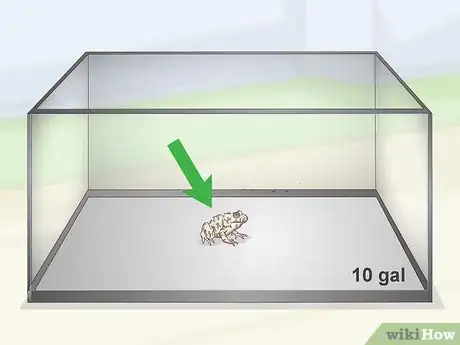
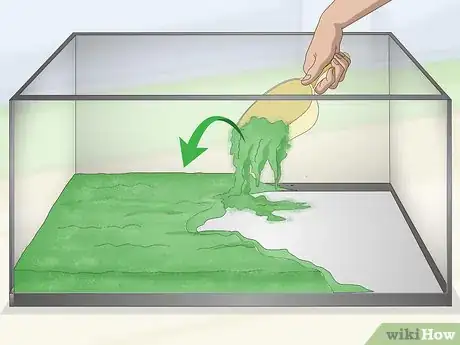
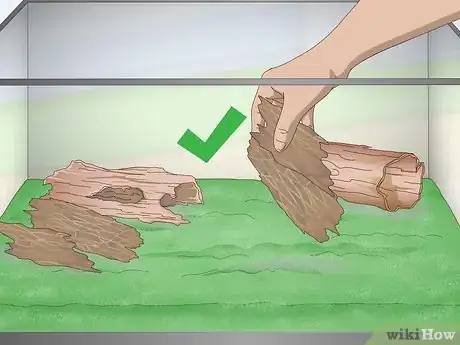
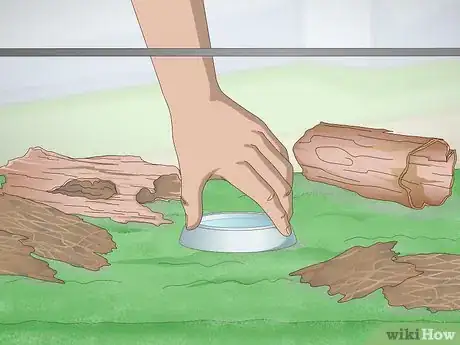

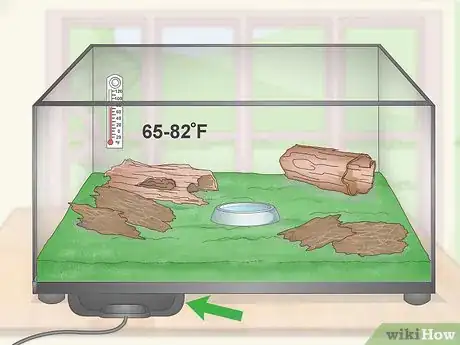
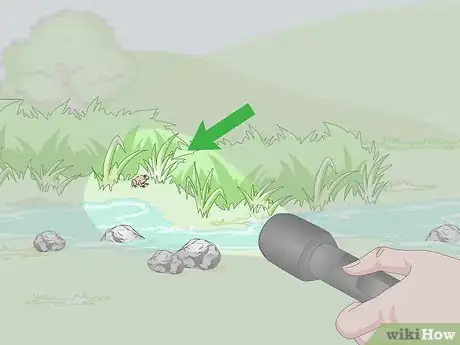
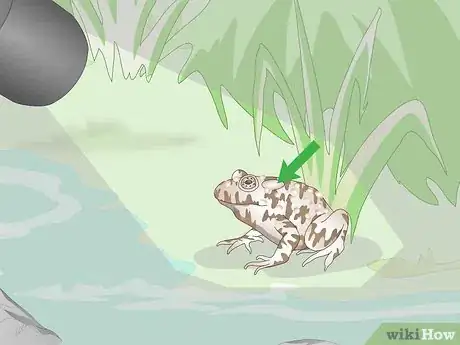
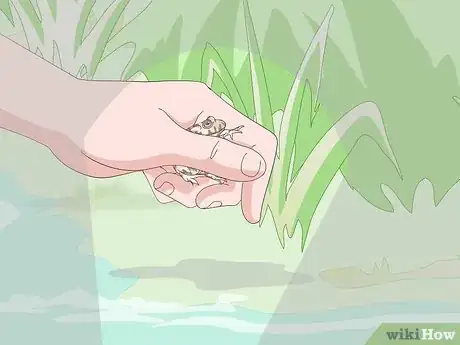
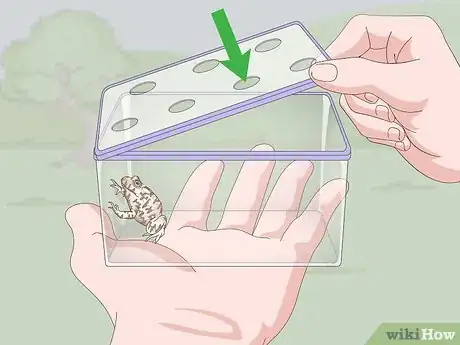
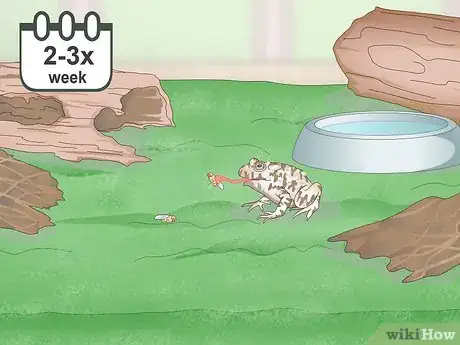
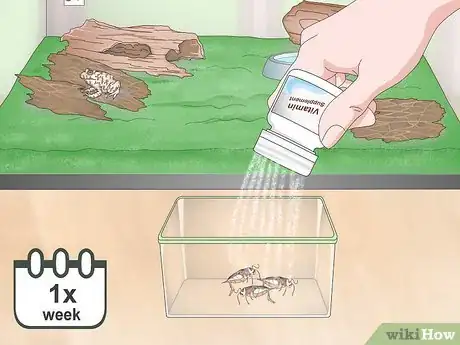
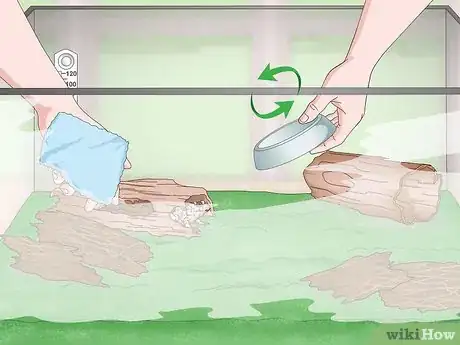
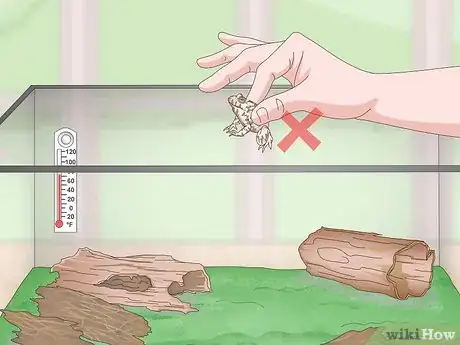
-Step-4.webp)
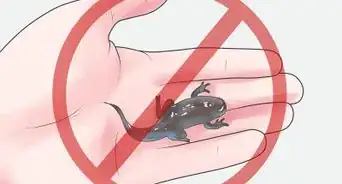




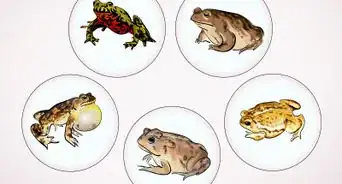

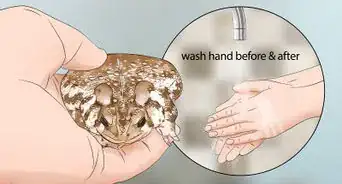

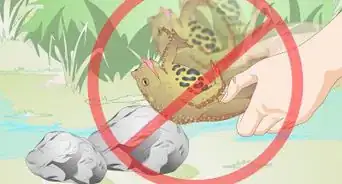










-Step-4.webp)
